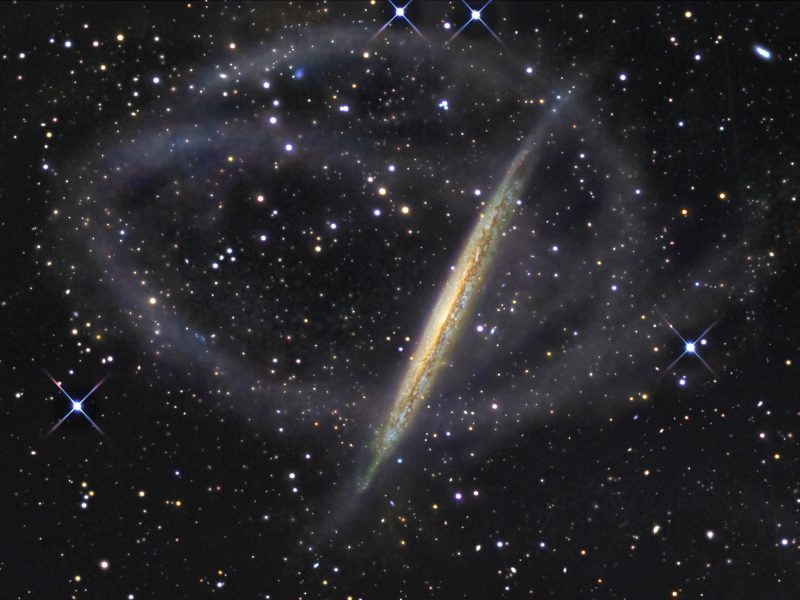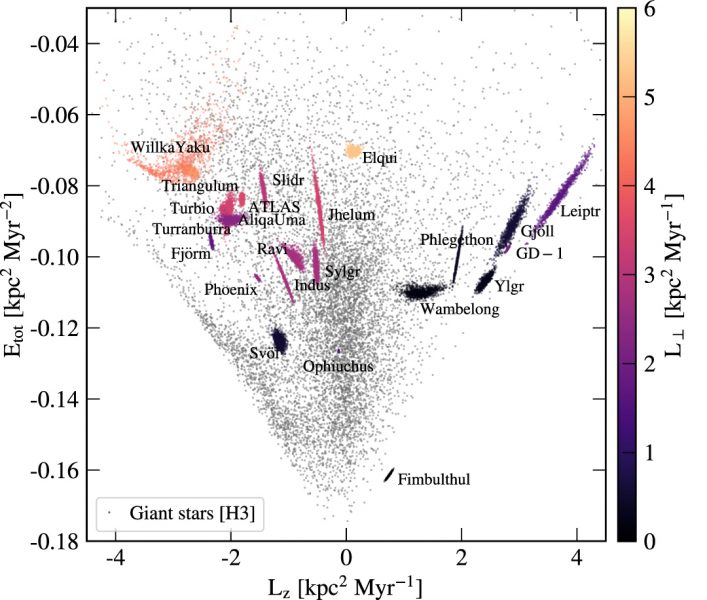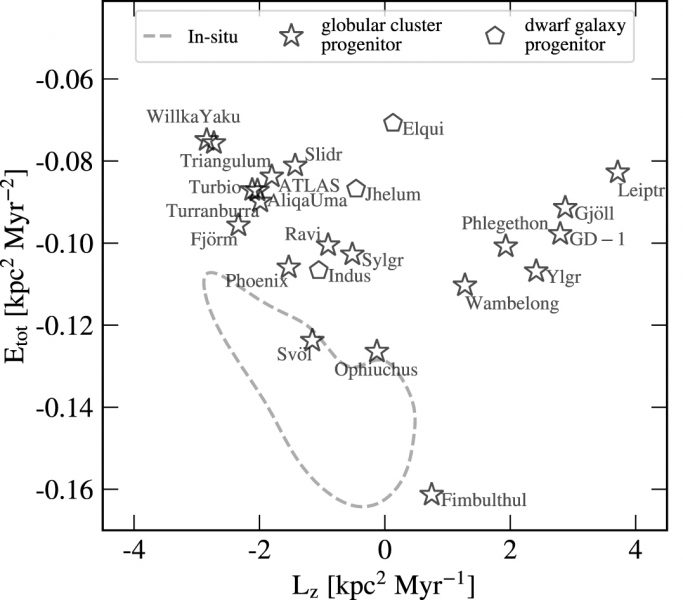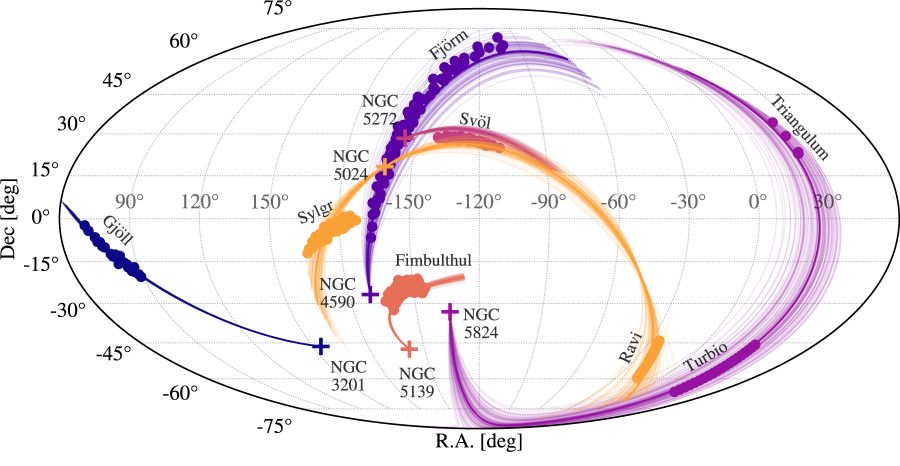A recent study has identified the origins of many of the long streams of stars that encircle the Milky Way. These streams may contain hints about our galaxy’s past.

R. Jay GaBany
The Milky Way is enwreathed in long streams of stars that hold clues to everything from our galaxy’s history to the nature of dark matter. New research has now identified the likely origins of some of these subtle ribbons.
Streams Across the Sky

Bonaca et al. 2021
Stellar streams are associations of stars that are grouped into elongated filaments arcing around a host galaxy. These filaments are thought to be produced when a stream progenitor — like a globular cluster or a satellite dwarf galaxy — is disrupted by its host galaxy’s tidal forces. Stars are drawn out from the progenitor into a tidal stream that then orbits the host galaxy; the progenitor itself may remain connected to the stream, orbit separately, or disrupt entirely.
We’ve observed stellar streams in other galaxies (like NGC 5907, shown above), but we needn’t look that far away — our own Milky Way is host to more than 60 catalogued streams. Of these thin trails, only a handful have been connected to a known progenitor, like a surviving globular cluster. The rest have unknown origins, leaving a number of open questions that only now, with current observations, have answers within reach.
In a recent study led by Ana Bonaca (Center for Astrophysics | Harvard & Smithsonian), a team of scientists has leveraged the incredible precision of the Gaia space observatory to hunt for the origins of 23 cold stellar streams in the Milky Way halo.
A Disrupted Home

Adapted from Bonaca et al. 2021
Bonaca and collaborators make use of improved proper motions provided in Gaia’s Early Data Release 3 for stars in these 23 streams. By analyzing the energies and 3D angular momenta of these streams, and by examining how the streams are distributed in physical space, the authors are able to identify the probable progenitors for most of the streams.
According to the authors’ results, only 1 of the streams plausibly originated from a globular cluster that was born in the Milky Way. The vast majority instead originated from dwarf galaxies that the Milky Way has accreted. Some of the streams were produced from the dwarf galaxies themselves; others were likely formed from disrupted globular clusters that orbited those dwarf galaxies.
Several of the 23 streams have similar properties, suggesting that many originated from the same progenitors. The authors identify original host dwarf galaxy candidates for 20 of the streams, and they point to 6 specific globular clusters as the origin of 8 of the streams.
Illuminating Dark Matter

Adapted from Bonaca et al. 2021
What can we do with this information? Understanding the origin of these stellar streams allows us to better trace their paths, how long they’ve been orbiting, and what other gravitational interactions they may have had over time. These details are valuable not just for understanding galaxy evolution, but also for mapping out the big-picture distribution of dark matter in our galaxy and studying the small-scale structure of dark matter in the streams’ host galaxies.
Further expansion of Bonaca and collaborators’ work to the other stellar streams orbiting the Milky Way will rely on continued high-quality proper motion measurements of these faint and distant sources. Look for more results as future Gaia data is released!
Citation
“Orbital Clustering Identifies the Origins of Galactic Stellar Streams,” Ana Bonaca et al 2021 ApJL 909 L26. doi:10.3847/2041-8213/abeaa9
This post originally appeared on AAS Nova, which features research highlights from the journals of the American Astronomical Society.
 0
0









Comments
You must be logged in to post a comment.